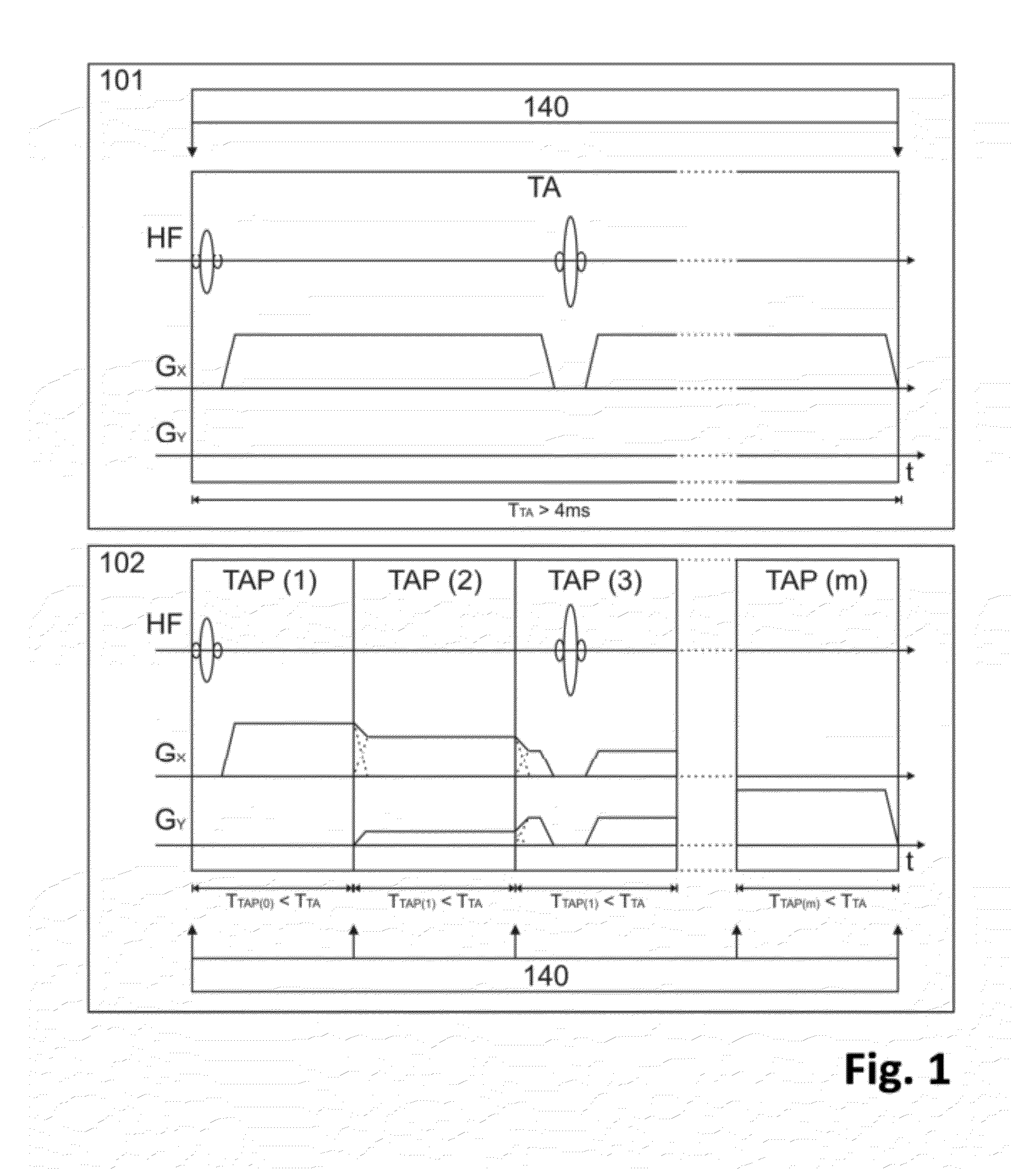Method for quasi-continous dynamic motion correciton in magnetic resonance measurements
a magnetic resonance and dynamic motion technology, applied in the field of magnetic resonance measurement method for quasi-continous dynamic motion correciton, can solve the problems of limiting the image quality that can be achieved, increasing the duration of an mr acquisition, and wasting time, so as to improve the quality of correction, limit the accuracy, and simplify the effect of position sensing and correction
- Summary
- Abstract
- Description
- Claims
- Application Information
AI Technical Summary
Benefits of technology
Problems solved by technology
Method used
Image
Examples
Embodiment Construction
[0013]According to the invention, this object is achieved in a surprisingly simple but effective manner in that the motion correction is applied during a signal weighting period, during a signal read-out period, or between and / or during the two stated periods, and that the adaptations for motion correction can be performed without interrupting or slowing the temporal progression of the MR acquisition.
[0014]Unlike known methods used for motion correction, which do not permit dynamic adaptation within a partial acquisition, the intensive motion correction is preferably performed multiple times (and ideally quasi-continuously, i.e. at intervals <3 ms, depending on the availability of the object position data) during partial acquisition. Dynamic correction is understood to be motion correction performed with updated parameters during the temporal progression of at least one of the two stated periods (signal weighting and signal read-out period).
[0015]It must be emphasized that only by s...
PUM
 Login to View More
Login to View More Abstract
Description
Claims
Application Information
 Login to View More
Login to View More - R&D
- Intellectual Property
- Life Sciences
- Materials
- Tech Scout
- Unparalleled Data Quality
- Higher Quality Content
- 60% Fewer Hallucinations
Browse by: Latest US Patents, China's latest patents, Technical Efficacy Thesaurus, Application Domain, Technology Topic, Popular Technical Reports.
© 2025 PatSnap. All rights reserved.Legal|Privacy policy|Modern Slavery Act Transparency Statement|Sitemap|About US| Contact US: help@patsnap.com



